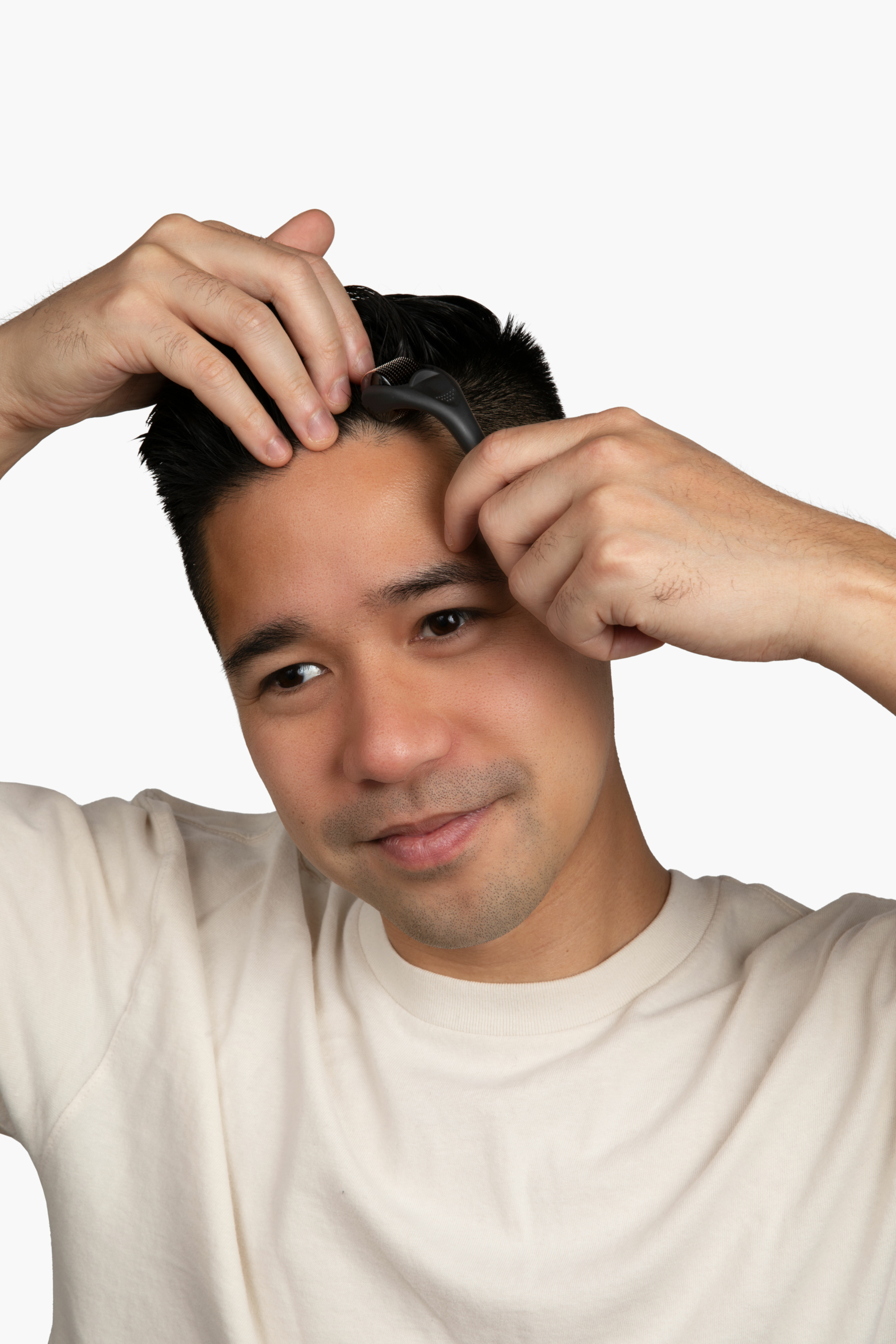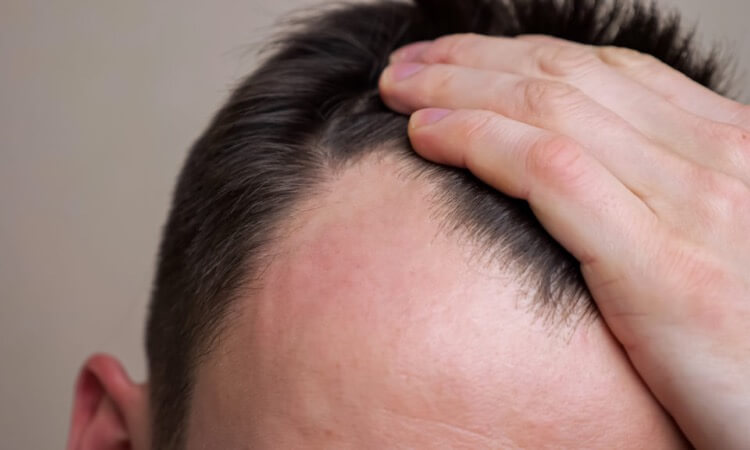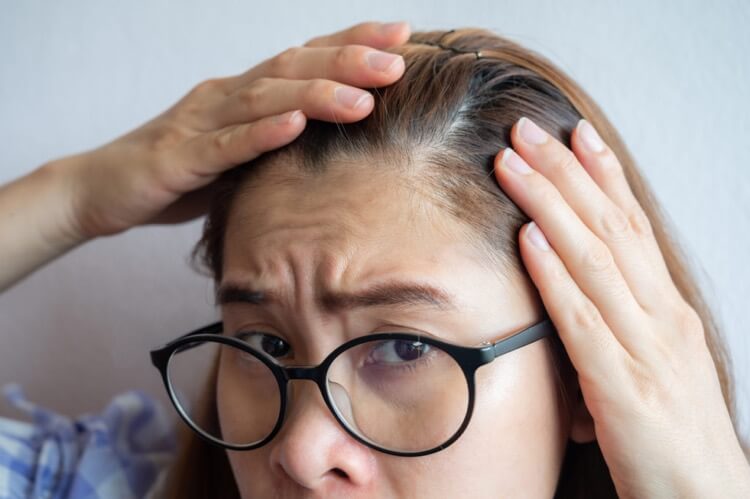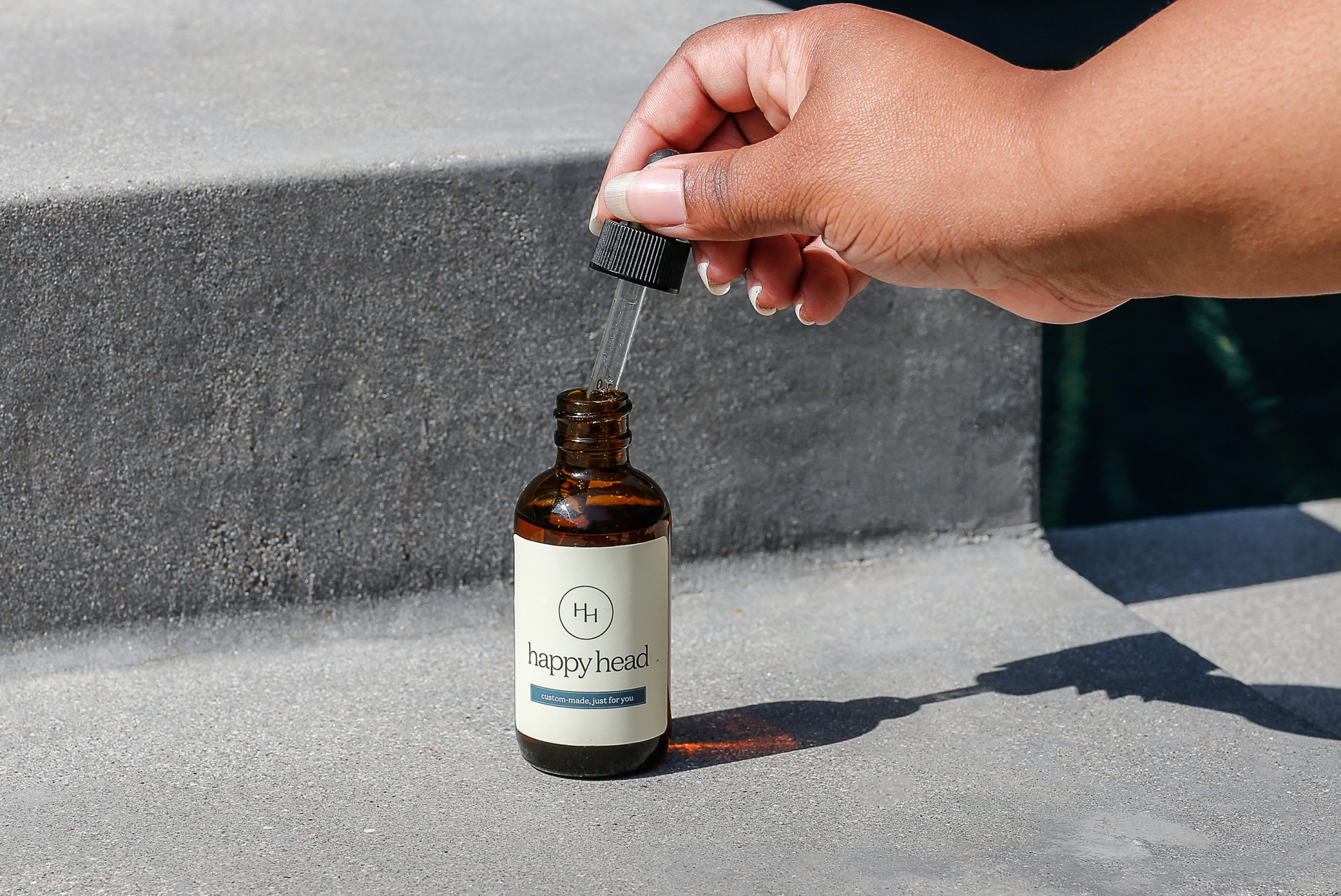Scalp Dermaroller: The Most Helpful Hair Growth Tool You Didn’t Know You Needed
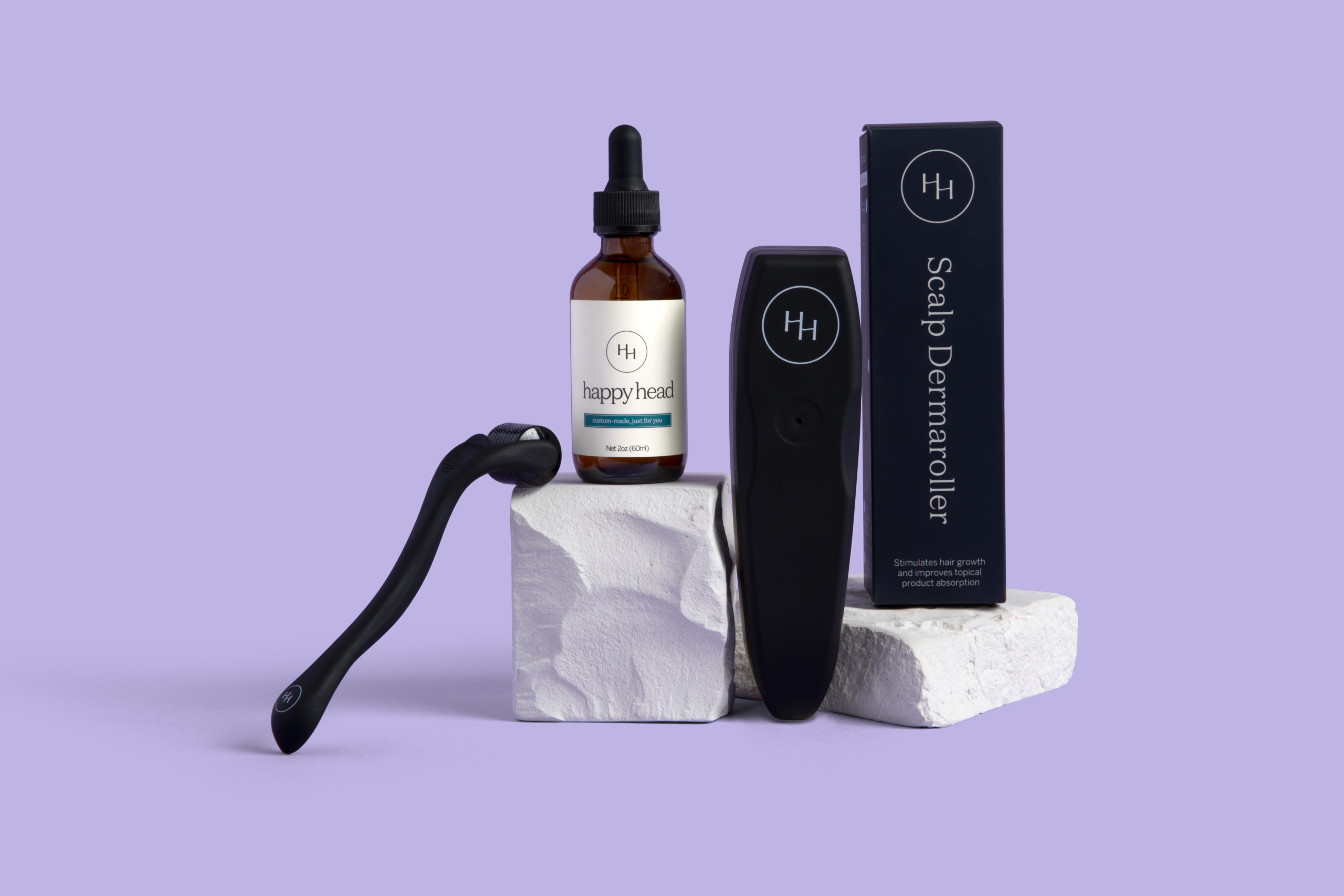
If you’re up-to-date on the latest skincare tools, you’ve probably heard about dermarollers designed to pump up your skin’s collagen. You may have even tried one. But did you know that scalp dermarollers can help rejuvenate your hair too? Although relatively new to the hair care scene, scalp dermarollers have quickly become a tool of choice, recommended by leading dermatologists and hair specialists. What makes scalp dermarollers so popular for treating hair loss? Will the trend last? We’re here to fill you in.
What Is a Scalp Dermaroller & What Does It Do?
A Scalp Dermaroller is a small hand-held roller with about 540 tiny needles on it. When rolled over your skin or scalp, the dermaroller’s needles create microscopic wounds that stimulate collagen and elastin production. Collagen keeps your skin firm, elastic, and hydrated. It’s also needed to build keratin which keeps your hair strong, shiny, and thick. In addition to building collagen, scalp dermarollers increase blood supply to the hair follicles, enlarging the follicles to allow new growth to emerge.
Why Are We Just Now Learning About Scalp Dermarolling? Is it New?
Although dermarolling, also known as microneedling, has been around since the 1900s to treat birthmarks, hyperpigmentation, and scars, we started hearing more about the treatment in the late 1990s. Since then, dermarolling has been studied and found to be effective among patients with alopecia areata (01) and androgenic alopecia. Patients with alopecia areata have seen positive results when applying triamcinolone after using a dermaroller. Patients with androgenic alopecia have seen positive results when applying Minoxidil after using a dermaroller. (02)
Are Scalp Dermarollers Safe?
Scalp dermarolling is quite safe and easy to do. Simply wet your hair and then gently roll back and forth with your Scalp Dermaroller, left and right, for just a few minutes. Make sure that you keep the dermaroller moving. Holding a dermaroller in one place in one area could cause scarring.
Can I Do Microneedling at Home?
The microneedling that’s referenced in this article can be done at home. All you need is a Scalp Dermaroller. The number of times that you use your dermaroller each week will depend on the length of the needles you are using and whether you are using your dermaroller to apply medication. Patients should always consult with their dermatologists to develop a treatment protocol since alopecia type, medications, hair density and other factors vary from person to person.
Other types of microneedling are performed in a dermatologist’s office. You may have heard of Protein Rich Plasma (PRP) treatments which are often done in conjunction with microneedling. During a PRP treatment, a patient’s blood is drawn and placed into a centrifuge machine. The blood is spun at a high rate so the components are separated. The platelets are then extracted and injected into the scalp. When PRP is combined with microneedling, topical anesthetic is applied first, medical-grade dermarollers are used, and then PRP is applied last. PRP treatments can only be done in a doctor’s office.
Which Scalp Dermaroller Should I Buy?
According to Dr. Ben Behnam, board-certified dermatologist, hair specialist, Happy Head co-founder and co-owner of Los Angeles-based Dermatology and Hair Restoration, the key to selecting a Scalp Dermaroller is to get the correct needle size. “When dermarolling, you don’t have to go very deep to get results,” said Behnam. “I recommend just 0.25, which is very shallow. Many people read online that a 1.5 depth is recommended, but in my opinion, that’s too deep. Nobody needs a roller that strong. Rollers with needles that are too long hurt, and they can damage the hair follicle. You certainly don’t want to damage areas where your hair is thinning or balding.” At Happy Head, we’ve designed a Scalp Dermaroller specifically for use alongside your usual topical hair growth solutions.
Using a Scalp Dermaroller to Apply Minoxidil (Rogaine), Finasteride, and Other Topical Medications Gives Better Results
A study conducted in 2013 compared patients with androgenic alopecia who used a dermaroller to apply Minoxidil to patients who did not use the roller. Not surprisingly, patients who used the roller achieved more growth. The dermaroller creates tiny holes in the scalp that allows the Minoxidil, Finasteride and other topical medications to penetrate deeper than they otherwise would. The medicine works more effectively.
If you’re using Minoxidil or any other topical hair loss treatment on your frontal hairline, Dr Behnam recommends using the topical about two inches behind the hairline to prevent getting the medicine on your face.
Can a Scalp Dermaroller Be Used On Facial Hair?
Although no research studies have been conducted on patients using dermarollers on their mustaches or beards, there’s enough evidence to indicate it’s worth a try. We know that Minoxidil is effective for hair growth and that dermarolling increases absorption. In addition to boosting collagen and keratin production, scalp dermarolling may help improve blood flow to the area.
Keep in mind that you may notice some redness after using the Scalp Dermaroller on your mustache or beard area. This irritation should disappear after a few days. If you experience bleeding, you may be using too much pressure. See if using less pressure helps.
Here are some other tips for facial dermarolling:
- Start with clean skin and facial hair
- Wait until acne has cleared up before dermarolling to prevent irritation or infection
- Use the least amount of pressure needed
- FIll-in each cheek with air as you do when shaving to get a flatter surface for dermarolling
- Get a consistent pattern by moving the dermaroller back and forth in horizontal, vertical and diagonal lines
How Much Do Scalp Dermarollers Cost?
Microneedling sessions at a dermatologist’s office can be very expensive, costing anywhere from $200 to $700 per session or more. Using a Scalp Dermaroller at home, however, saves time, money and gas. Scalp dermarollers designed for home use are similar to the ones dermatologists use, but have smaller needles. As we’ve discussed though, smaller needles can still pack quite a punch. Dermarollers used at home are very budget-friendly. The average price of a good stationary unit ranges anywhere from $30 to $50. A good quality electric unit costs $100 – $200 depending upon the features included.
Should You Test out a Dermaroller On Your Scalp?
So, here’s the takeaway. A dermaroller is an inexpensive hair growth tool that increases the effectiveness of topical treatments among patients with androgenic alopecia and alopecia areata. As with any medical treatment, you should always check with your dermatologist before buying or using a dermaroller. Although dermarolling is an easy, low-risk at-home treatment, it is not recommended for scarring alopecias.
Always make sure that you buy your dermroller from a trusted source. As with any other hair tool, make sure that you keep your dermaroller clean according to the package instructions. Finally, use your Scalp Dermaroller as recommended, usually a couple times a week, and be careful not to overuse it. More won’t give you better or faster results.
Resources:
(01) https://www.ncbi.nlm.nih.gov/pmc/articles/PMC3996798/
(02) https://www.ncbi.nlm.nih.gov/pmc/articles/PMC3746236/

